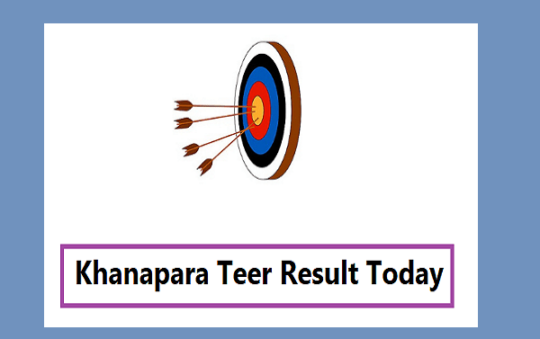Designing engaging picture books is a unique art form that requires a combination of artistic skill and storytelling ability. Picture books are a popular form of literature for young children, and they are often the first introduction to reading that children receive. The illustrations in picture books are just as important as the words themselves, as a picture book editor will help bring the story to life and engage the reader.

Creating engaging picture book illustrations requires a unique set of skills and techniques. The characters in a picture book are the heart and soul of the story, and they need to be appealing, relatable, and memorable. Illustrators must also consider the design and layout of the book, as well as the flow of the text and the use of color. By combining these elements, illustrators can create picture books that are both visually stunning and engaging for young readers.
To design an engaging picture book, creators must consider the audience they are targeting. Picture books are typically aimed at young children, so the illustrations must be simple, colorful, and easy to understand. The text should also be easy to read and follow, with a clear and concise message. By keeping these factors in mind, creators can design picture books that capture the attention of young readers and help foster a love of reading.
Contents
Fundamentals of Picture Book Design
https://www.youtube.com/watch?v=vGm_jV-bcog&embed=true
Understanding the Basics
Designing an engaging picture book involves more than just illustrations and content. It requires a deep understanding of the basics of book design. The first step is to bring the story to life with engaging illustrations that capture the imagination of young readers. The next step is to consider technical aspects such as formatting, bleed, margins, and paper stock. It is also important to consider legal and copyright considerations, such as obtaining the necessary permissions and licenses.
Bringing Stories to Life
To create an engaging picture book, the writer must first come up with a compelling idea and develop it into a story that resonates with young readers. The word count should be appropriate for the target age group, and the storyboard should be carefully planned to ensure that the illustrations and text flow seamlessly. The writer should also consider the educational value of the book and whether it can be used as a tool for learning.
Technical Aspects of Printing
When it comes to printing a picture book, there are several technical aspects to consider. The book size, page count, and format must be carefully chosen to ensure that the book is visually appealing and easy to handle. The designer should also pay attention to bleed, margins, and paper stock to ensure that the final product is of high quality. Print-on-demand or offset printing can be used to produce the book, depending on the budget and desired quantity.
Legal and Copyright Considerations
It is important to consider legal and copyright considerations when designing a picture book. The designer should obtain the necessary permissions and licenses for any copyrighted material used in the book. The copyright page should be included in the book, along with any other legal notices or disclaimers.
Choosing the Right Format
There are several formats to choose from when designing a picture book, including hardcover, board book, and paperback. The designer should consider the target age group and the intended use of the book when choosing the format. Standard sizes are also available, or a custom size can be chosen to suit the specific needs of the book.
Design Software and Tools
Design software such as Adobe InDesign or Adobe Illustrator can be used to design the book cover and layout. There are also several resources available online for designing and formatting children’s picture books, such as Reedsy and children’s book templates. Mockups can be created to visualize the final product before printing.
Designing engaging picture books involves several elements, including illustrations, content, formatting, and legal considerations. By following these simple steps, designers can create picture books that captivate young readers and families alike.
Marketing and Publishing Your Picture Book
https://www.youtube.com/watch?v=0CNh7op5DaE&embed=true
When it comes to publishing and marketing your picture book, there are two main options: self-publishing and traditional publishing. Each option has its own advantages and disadvantages, and it is important to carefully consider which one is the best fit for your book.
Self-Publishing vs Traditional Publishing
Self-publishing can be a great option for authors who want more control over the publishing process and a higher percentage of royalties. Platforms like Amazon KDP and IngramSpark make it easy to get your book into the hands of readers, and you can choose your own cover design, formatting, and pricing. However, self-publishing also means that you are responsible for all aspects of the publishing process, including editing, marketing, and distribution.
Traditional publishing, on the other hand, offers the support of a publishing company and the expertise of professionals in the industry. You may also have access to a wider distribution network and more marketing resources. However, traditional publishing often involves a longer timeline and lower royalties.
Creating a Marketing Plan
No matter which publishing route you choose, a strong marketing plan is essential for getting your book into the hands of readers. Start by identifying your target audience and developing a clear message that will resonate with them. Consider using social media platforms like Facebook, Instagram, and Twitter to promote your book and engage with your audience. You can also host events in local bookstores or libraries to generate buzz and connect with potential readers.
Distribution Channels and Retailers
When it comes to distribution, there are a variety of channels and retailers to consider. If you choose to self-publish, platforms like Amazon KDP and IngramSpark offer global distribution to major online retailers. You can also consider selling your book directly through your own website or at local markets and events.
If you choose traditional publishing, your publisher will likely handle distribution to major retailers like Barnes & Noble and independent bookstores. However, it is important to remember that not all retailers will carry your book, so it is important to research and identify the best distribution channels for your target audience.
Conclusion

In conclusion, designing an engaging picture book is not only a creative process but also a fulfilling one with numerous advantages. Picture books impart knowledge, encourage vocabulary development, and enhance comprehension skills. They also provide repeated oral input in a meaning-rich environment while exposing children to natural English.
Successful picture books strike the right balance between appealing to two different audiences: children and parents. While they are intended for children, it’s ultimately the parents who decide whether or not to buy them or to read them aloud. Therefore, authors and illustrators should look for new ways to depict universal topics and make them appealing to both children and parents.
To develop a picture book, authors and illustrators need to have a clear idea of their target audience, the message they want to convey, and the story they want to tell. They should also pay attention to the visual elements of the book, such as the illustrations, typography, and layout.
In summary, designing an engaging picture book requires creativity, knowledge, and attention to detail. By following the steps outlined in this article and using the tips provided by the search results, authors and illustrators can create picture books that are not only entertaining but also educational and inspiring.



